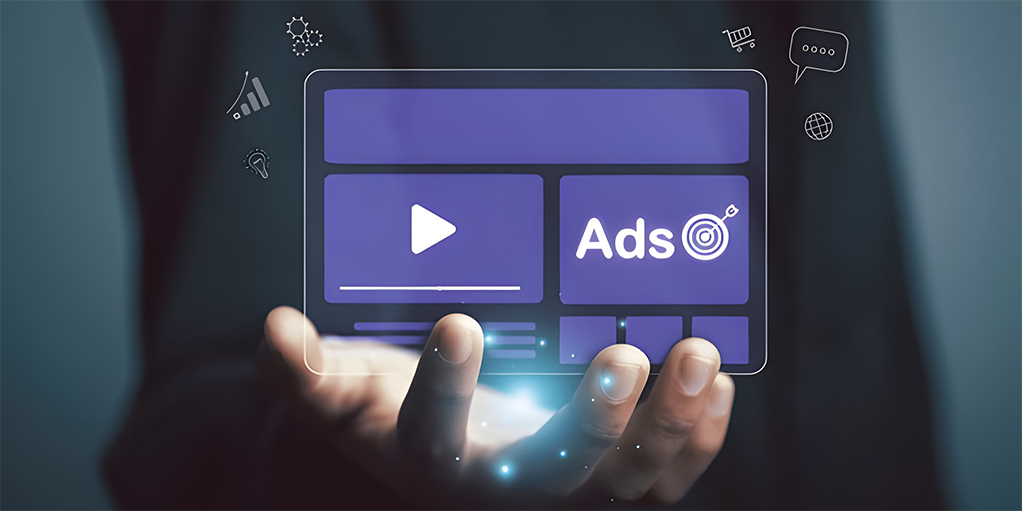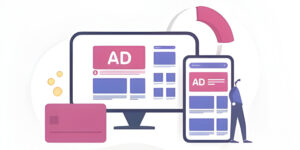Introduction
In the ever-evolving world of digital marketing, programmatic advertising has emerged as a powerful tool for brands seeking to optimize their ad spend and reach their target audience more effectively. For beginners, the concept of programmatic advertising might seem complex, but understanding its basics can unlock significant benefits for your marketing strategy. This guide will break down the essentials of programmatic advertising and explain how you can leverage it to achieve your marketing goals.
What is Programmatic Advertising?
Programmatic advertising is the automated buying and selling of online ad space. Unlike traditional advertising methods involving manual negotiations and direct contact with publishers, programmatic advertising uses sophisticated algorithms and real-time bidding (RTB) to purchase ad space.
The critical components of programmatic advertising include:
- Demand-Side Platforms (DSPs): These platforms enable advertisers to acquire ad impressions from a variety of publishing sites in an automated manner.
- Supply-Side Platforms (SSPs): These platforms enable publishers to programmatically sell their ad space inventory.
- Ad Exchanges: These are digital marketplaces where DSPs and SSPs interact to facilitate the buying and selling of ad space through real-time auctions.
How Does Programmatic Advertising Work?
- Real-Time Bidding (RTB):
- Ad Auction: An auction occurs in milliseconds when a visitor visits a website, deciding which ad will show. The highest bidder wins when advertisers compete for the available ad space.
- Automated Process: This entire process is automated, with algorithms deciding which ads to show based on the bids and predefined targeting criteria.
- Targeting:
- Data-Driven: Programmatic advertising leverages vast amounts of data to target specific audiences based on demographics, interests, browsing behavior, and more.
- Precision: Ads are only shown to people who are most likely to be interested in the promoted good or service thanks to precision targeting.
- Optimization:
- Continuous Improvement: Algorithms continuously analyze performance data and optimize campaigns in real-time to improve results and maximize return on investment (ROI).
Benefits of Programmatic Advertising
- Efficiency:
- Automation: Programmatic advertising automates the ad buying process, saving time and reducing the need for manual negotiations.
- Speed: Real-time bidding ensures that ad placements happen instantly, allowing for more timely and relevant advertising.
- Precision Targeting:
- Audience Segmentation: Advertisers can target very specific audience segments based on a wide range of data points.
- Reduced Waste: This precise targeting minimizes ad spend waste by ensuring ads are shown to the most relevant audiences.
- Scalability:
- Broad Reach: Programmatic advertising allows advertisers to reach a large audience across numerous platforms and devices.
- Global Scale: It’s possible to scale campaigns globally, accessing ad inventory from publishers worldwide.
- Transparency and Control:
- Detailed Reporting: Advertisers have access to detailed performance data, allowing for better campaign analysis and optimization.
- Budget Control: It’s easier to manage and adjust budgets in real-time, ensuring better control over ad spend.
Getting Started with Programmatic Advertising
- Set Clear Goals:
- Define Objectives: Determine what you want to achieve with your programmatic campaigns, whether it’s brand awareness, lead generation, or sales.
- Key Metrics: Decide which key performance indicators (KPIs) will be used to gauge your campaigns’ effectiveness.
- Choose the Right Platform:
- DSP Selection: Research and select a demand-side platform that suits your needs. Popular DSPs include Google Marketing Platform, The Trade Desk, and MediaMath.
- Integration: Ensure the chosen DSP can integrate with your existing marketing tools and data sources.
- Audience Targeting:
- Data Utilization: Use first-party data (from your sources) and third-party data (from external providers) to define your target audience.
- Segmentation: Create detailed audience segments to ensure precise targeting.
- Create Compelling Ads:
- Ad Formats: Use a variety of ad formats, including display ads, video ads, native ads, and more, to engage your audience.
- Creativity: Invest in high-quality ad content that captures attention and drives engagement.
- Monitor and Optimize:
- Real-Time Analytics: Continuously monitor your campaign performance through real-time analytics.
- Adjust and Optimize: Make data-driven adjustments to your targeting, bids, and ad creatives to optimize performance.
Challenges and Considerations
- Ad Fraud:
- Awareness: Be aware of the potential for ad fraud in programmatic advertising, such as fake clicks and impressions.
- Verification: Use ad verification tools and work with reputable partners to minimize the risk of fraud.
- Privacy Concerns:
- Compliance: Make sure that the programmatic advertising you do complies with data protection laws like the CCPA and GDPR.
- Transparency: Be open and honest with users about how you acquire and use their data.
- Complexity:
- Learning Curve: Understand a learning curve associated with programmatic advertising. Invest time in learning the platforms and best practices.
- Expertise: Consider working with experienced programmatic advertising professionals or agencies to get the most out of your campaigns.
Conclusion
Be open and honest with users about how you acquire and use their data. By leveraging automation, precision targeting, and continuous optimization, businesses can maximize their advertising ROI and stay competitive in the digital marketplace. For beginners, starting with clear goals, choosing the right platform, and continuously monitoring and optimizing campaigns are crucial to success. Embrace the potential of programmatic advertising and unlock new opportunities for growth in your digital marketing strategy.
To know more about Programmatic Ads, Please visit https://paypercampaign.com





